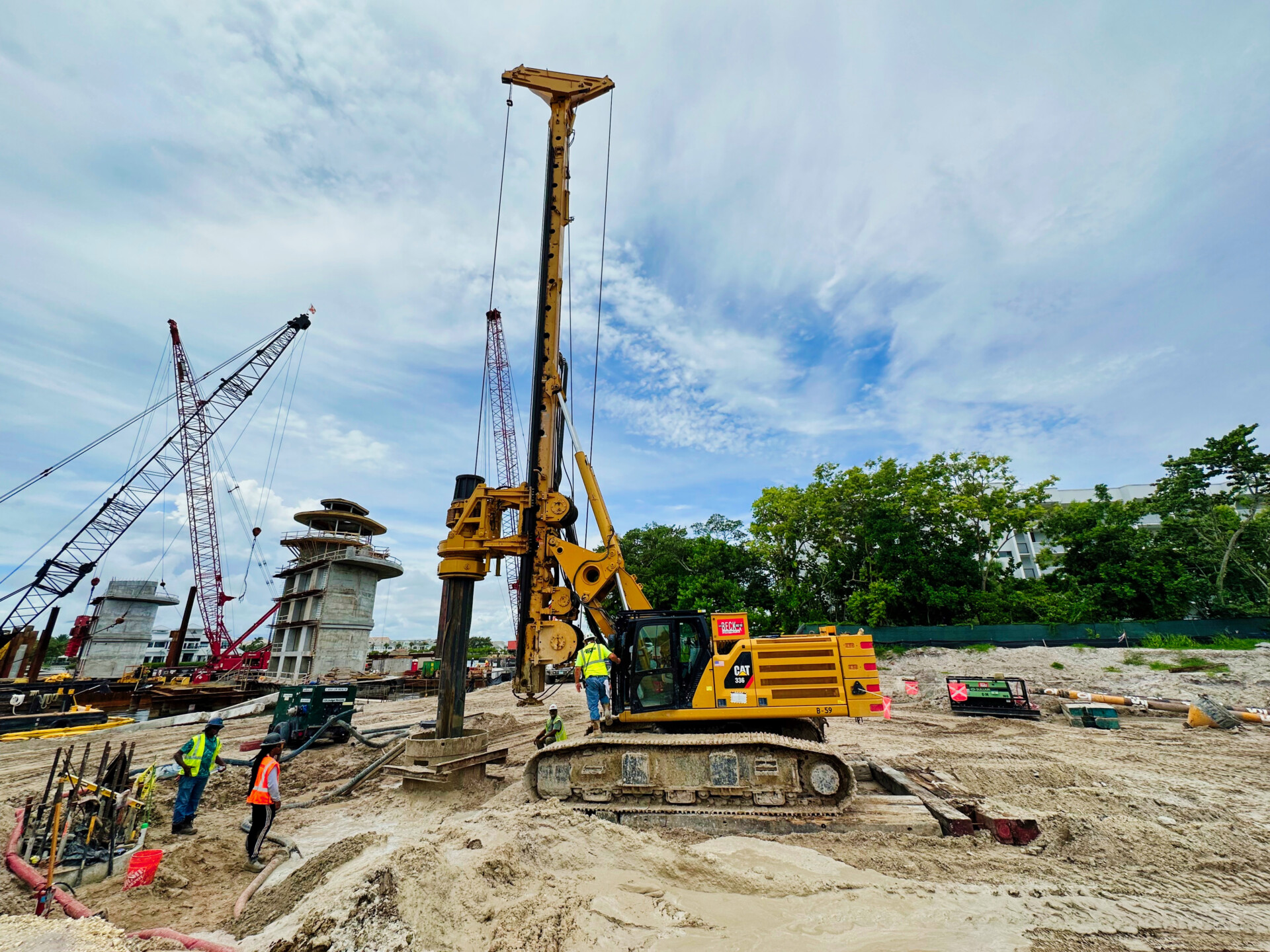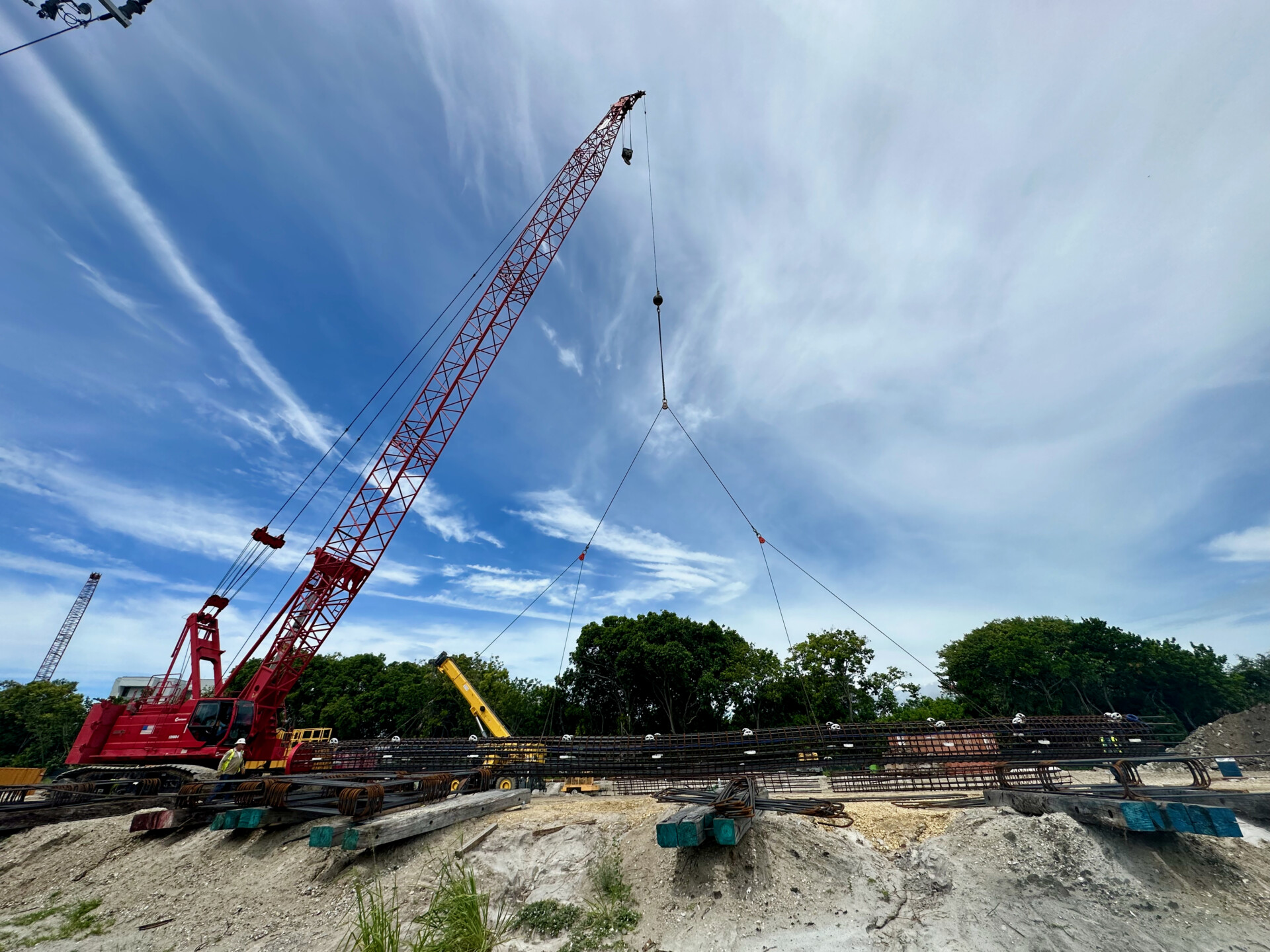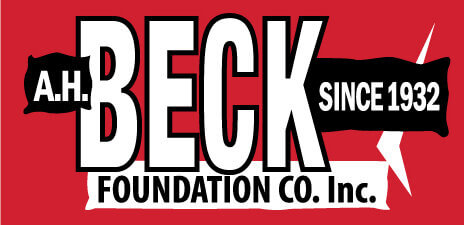For the US-1 Bascule Bridge replacement over the Loxahatchee River at Jupiter Inlet, Johnson Bros. contracted A.H. Beck to provide drilled shaft foundations for the bridge's north end. This foundation method was chosen because of its proximity to a historic lighthouse, offering reduced vibrations compared to pile driving. The CAT based Beck 250 drill rig was used throughout the project. Post-grouting methods were employed to improve the end-bearing capacity of the shafts, allowing for shorter shaft lengths. A.H. Beck confirmed the effectiveness of this approach with a successful bi-directional load test.
For the US-1 Bascule Bridge replacement over the Loxahatchee River at Jupiter Inlet, Johnson Bros. contracted A.H. Beck to provide drilled shaft foundations for the bridge’s north end. This foundation method was chosen because of its proximity to a historic lighthouse, offering reduced vibrations compared to pile driving. The CAT based Beck 250 drill rig was used throughout the project. Post-grouting methods were employed to improve the end-bearing capacity of the shafts, allowing for shorter shaft lengths. A.H. Beck confirmed the effectiveness of this approach with a successful bi-directional load test.




